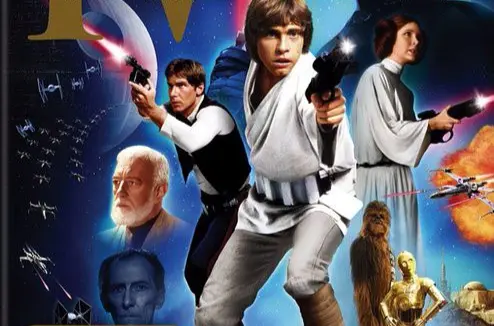Cosmic Odyssey: The Uncharted Legacy of Star Wars’ Galactic Revolution
The *Star Wars* saga is more than a space opera—it’s a mythic tapestry weaving destiny, rebellion, and the eternal clash between light and shadow. From desert planets to neon-lit cities, these stories have redefined heroism, not through perfection, but through the messy, glorious struggle to choose hope when the galaxy trembles.
It began with a single spark of defiance. *A New Hope* (1977) wasn’t just a film; it was a seismic shift in storytelling. Luke Skywalker’s journey from farm boy to Jedi echoed ancient myths but felt urgently human. The audacity of Darth Vader’s entrance—a breathless symphony of darkness—announced that villains could be as iconic as heroes. Yet the saga’s soul lay in its rebels: scoundrels, droids, and princesses who turned a ragtag fight into a universal anthem for freedom.

The Empire Strikes Back
What followed was a deepening of the cosmos. *The Empire Strikes Back* (1980) dared to let heroes fall. Han’s carbonite prison, Luke’s severed hand, and Vader’s shattering revelation—“*I am your father*”—rewrote the rules of blockbuster storytelling. Loss became the heartbeat of the saga. Yet even in despair, Yoda’s whisper—“*Luminous beings are we*”—reminded audiences that failure is the forge of greatness.
Star Wars’ brilliance lies in its duality: lightsabers clash amid intimate reckonings. *Rogue One* (2016) transformed side characters into legends through a single act: standing on a beach, facing annihilation. Cassian Andor’s weary resolve and Jyn’s defiant “*Rebellions are built on hope*” reframed sacrifice not as tragedy, but as collective courage. The Death Star’s blast wasn’t just spectacle—it was a quiet hymn to ordinary rebels who become stardust.
No moment, however, shook fandom like Kylo Ren’s mask shattering in *The Last Jedi* (2017). Here was a villain stripped of theatrics, a boy raging at legacies. Luke’s final stand on Crait—a hologram Jedi facing down an army—wasn’t about power, but about myth itself. The galaxy watched a legend become *more* than legend, his final breath merging with twin suns. Divisive? Yes. Revolutionary? Unquestionably.
The Skywalker saga’s finale, *The Rise of Skywalker* (2019), balanced nostalgia with audacity. Palpatine’s return echoed timeless fears of resurgent evil, but the film’s heart beat in Rey’s choice: to claim not a royal name, but the spirit of those who shaped her. “*Rey Skywalker*” wasn’t an ending—it was a passing of the torch, a promise that anyone, even a scavenger from nowhere, could inherit the stars.
Beyond the films, the galaxy expanded. *The Mandalorian* (2019) turned a lone bounty hunter and a green child into icons. Grogu’s wide-eyed wonder and Din Djarin’s gruff tenderness proved that family could be forged in the unlikeliest corners of space. Meanwhile, *Andor* (2022) stripped away lasers for raw political defiance, showing revolutions built not by Jedi, but by tired souls whispering, “*Fight the empire*.”

Star Wars’ legacy isn’t in its box office; it’s in the child who builds a cardboard X-wing, the refugee who sees themselves in the Rebellion, or the dreamer who finds faith in “*May the Force be with you.*” These stories are campfires in the dark, reminding us that heroism isn’t about destiny—it’s about the choice to rise, again and again, no matter how fractured the galaxy.